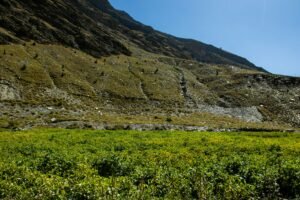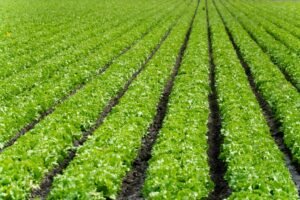California’s agricultural industry is one of the most productive in the world, supplying fruits, vegetables, and dairy products to millions of people across the nation. Yet despite its success, the state’s farmlands face a recurring and often underestimated threat — flooding. Whether caused by heavy rainfall, snowmelt, or levee breaches, floods can devastate crops, equipment, and farm infrastructure in a matter of hours. That’s why flood insurance has become a crucial component of risk management for California farmers who want to protect their operations and financial stability.
Understanding the Need for Flood Insurance
Many farmers believe their standard farm insurance covers flood-related damage, but this is rarely the case. Most traditional property or crop policies exclude flooding as a covered peril. Without a separate flood insurance policy, even a single flood event can result in catastrophic losses that are not reimbursed. California’s Central Valley, the heart of its agricultural output, is particularly vulnerable due to its low elevation and proximity to rivers. Flood insurance ensures that when water levels rise unexpectedly, your business remains financially secure.
How Flooding Affects California’s Farmlands
Floods can have devastating short- and long-term effects on farms. Excess water can wash away topsoil, destroy crops, and contaminate irrigation systems with debris or pollutants. Equipment stored in low-lying areas can become damaged beyond repair, while livestock may be displaced or harmed. Additionally, recovery after a flood can take months, leaving farmers unable to plant or harvest on schedule. The economic toll can be enormous — not only for individual farms but also for California’s overall agricultural economy. Having dedicated flood insurance helps offset these risks, allowing farmers to recover faster and resume operations.
What Flood Insurance Covers
A farm flood insurance policy typically covers direct physical damage caused by rising water from natural sources, including rain, rivers, and storm surges. Coverage often extends to:
Farm buildings such as barns, silos, and storage sheds
Irrigation and drainage systems
Machinery and farm equipment
Livestock shelters and fencing
Stored feed, seed, and harvested crops (if included in the policy)
In addition to property protection, some policies include coverage for cleanup costs, debris removal, and even temporary relocation expenses if your farm becomes inaccessible after a flood.
The Role of Government Programs and Private Insurers
In California, farmers can purchase flood insurance through the National Flood Insurance Program (NFIP), which provides federally backed protection for properties in flood-prone areas. However, NFIP coverage limits may not be sufficient for large or high-value farms. Many farmers supplement this with private flood insurance, which can offer higher coverage limits and broader protection options. Partnering with an experienced insurance provider helps you assess the right mix of coverage based on your farm’s location, flood zone, and operational scale.
Risk Assessment and Prevention
Flood insurance is essential, but prevention and planning can greatly reduce losses. Conducting regular risk assessments helps identify vulnerable areas on your property, such as low-lying storage zones or inadequate drainage systems. Installing flood barriers, maintaining levees, and elevating critical equipment are all effective mitigation strategies. Keeping up with local weather forecasts and emergency alerts can also help farmers take early action to minimize potential damage. Insurers often look favorably on farms that demonstrate strong risk management, potentially reducing premium costs.
Why Flood Insurance is Vital for California Farmers
California’s changing climate has made flood events increasingly unpredictable. Periods of intense rainfall following long droughts can overwhelm dry soil, leading to flash floods. In 2023, for example, atmospheric river storms caused significant flooding across Central California, damaging hundreds of thousands of acres of farmland. With such variability becoming the new normal, flood insurance is no longer optional — it’s a vital safeguard for agricultural stability and resilience.
Conclusion: Secure Your Farm from California’s Flood Risks
Flooding can strike when least expected, leaving behind destruction that takes years to recover from. For California farmers, flood insurance provides the protection needed to rebuild and move forward after such events. It shields your property, equipment, and income from the devastating financial impact of water damage. To explore comprehensive flood insurance solutions tailored to California’s agricultural regions, visit Western Insurance







